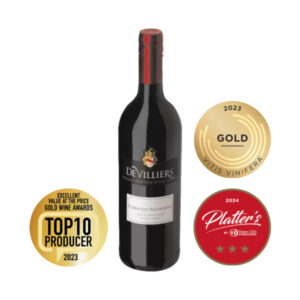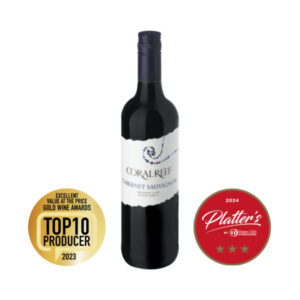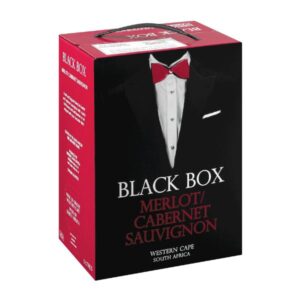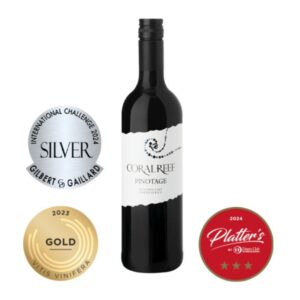
Merlot vs Cabernet Sauvignon: The Ultimate Food Pairing Guide

Wine has been a staple in human culture for centuries, and it’s no wonder why. The complexity and depth of flavors that wine can offer is unparalleled, and two of the most popular wines on the market are Merlot and Cabernet Sauvignon.
But what makes them so popular?
In this article, we’re going to explore the characteristics of each wine, their ideal food pairings, and other factors to consider when pairing wine with food. By the end of this guide, you’ll be a pro at pairing Merlot and Cabernet Sauvignon with your favorite dishes.
Understanding Merlot and Cabernet Sauvignon
Merlot and Cabernet Sauvignon are both red wines, but they have distinct differences in flavor and aroma. Merlot grapes are known for their soft, velvety texture and fruity flavors such as black cherry, plum, and blueberry. Cabernet Sauvignon, on the other hand, is known for its bold, full-bodied flavor with notes of black currant, blackberry, and oak. But what factors influence the flavors and aromas of each wine? The climate, soil, and winemaking process all play a role. Merlot thrives in cooler climates and is aged in oak barrels, while Cabernet Sauvignon is grown in warmer climates and aged in oak for a longer period.
When it comes to food pairing, it’s important to consider the characteristics of each wine. Merlot pairs well with lighter meats such as chicken, pork, and lamb, as well as tomato-based dishes and pasta. Cabernet Sauvignon, on the other hand, pairs well with heartier meats such as beef and game, as well as strong cheeses and dark chocolate.
Pairing Merlot with Food
Merlot has a soft, fruity flavor that pairs well with a variety of foods. The ideal food pairing for Merlot is dishes that are not too heavy or spicy, allowing the wine’s flavors to shine through. For example, a classic pairing with Merlot is roasted chicken or pork with herbs and a side of roasted vegetables. The light flavors of the meat and vegetables complement the wine’s soft texture and fruitiness.
Other foods that pair well with Merlot include tomato-based dishes such as spaghetti with meat sauce, lasagna, or pizza. The acidity of the tomatoes complements the wine’s fruitiness and makes for a delicious combination. Another great pairing is grilled salmon with a side of risotto. The buttery texture of the risotto and the flaky texture of the salmon pair perfectly with the soft, velvety texture of Merlot.
When pairing Merlot with food, it’s important to consider the texture and flavors of both the food and the wine. Lighter meats and tomato-based dishes work well with Merlot’s soft texture and fruity flavors, while heavier meats and spicy dishes can overpower the wine’s delicate flavors.
-
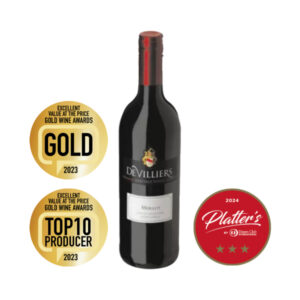 De Villiers Wines MerlotR360,00
De Villiers Wines MerlotR360,00 -
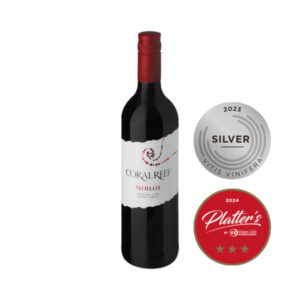 Coral Reef Wines MerlotR360,00
Coral Reef Wines MerlotR360,00 -
 Black Tie Wines MerlotR360,00
Black Tie Wines MerlotR360,00 -
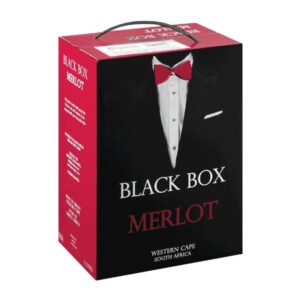 Black Box Wines MerlotR880,00
Black Box Wines MerlotR880,00
Pairing Cabernet Sauvignon with Food
Cabernet Sauvignon has a bold, full-bodied flavor that pairs well with rich, hearty dishes. The ideal food pairing for Cabernet Sauvignon is dishes that have a strong flavor profile and can stand up to the wine’s boldness. A classic pairing with Cabernet Sauvignon is a juicy steak with a side of roasted potatoes. The bold, meaty flavors of the steak complement the wine’s full-bodied flavor and create a delicious combination.
Other foods that pair well with Cabernet Sauvignon include strong cheeses such as cheddar or blue cheese, grilled lamb chops, and dark chocolate. The rich, complex flavors of these dishes complement the wine’s boldness and create a harmonious balance of flavors.
When pairing Cabernet Sauvignon with food, it’s important to consider the strength of the flavors in both the food and the wine. Rich, hearty dishes work well with Cabernet Sauvignon’s boldness, while lighter dishes can be overpowered by the wine’s strong flavors.
Head-to-Head Comparison: Merlot vs Cabernet Sauvignon Food Pairings
When comparing the food pairings for Merlot and Cabernet Sauvignon, it’s important to consider the characteristics of each wine. Merlot pairs well with lighter meats and tomato-based dishes, while Cabernet Sauvignon pairs well with heartier meats and strong cheeses. However, there are some dishes that can be paired with both wines.
One example is a classic beef stew. Both Merlot and Cabernet Sauvignon pair well with the rich, hearty flavors of the beef, carrots, and potatoes in the stew. Another example is grilled vegetables such as eggplant, zucchini, and bell peppers. The earthy flavors of the vegetables complement the fruity flavors of Merlot and the boldness of Cabernet Sauvignon.
When deciding which wine to pair with a dish, it’s important to consider the strength of the flavors in both the food and the wine. If the dish has a strong flavour profile, it’s best to pair it with Cabernet Sauvignon. If the dish has lighter flavors, Merlot is a better choice.
Other Factors to Consider in Wine and Food Pairing
When pairing wine with food, it’s important to consider other factors such as tannins, acidity, and sweetness. Tannins are compounds found in the skins, seeds, and stems of grapes that give wine its dry, bitter taste. Wines with high tannins, such as Cabernet Sauvignon, pair well with fatty or protein-rich foods that can balance out the bitterness. Acidity is another important factor to consider. Wines with high acidity, such as Sauvignon Blanc, pair well with acidic foods such as citrus or tomato-based dishes. Finally, sweetness is an important factor to consider when pairing wine with dessert. Sweeter wines such as Moscato or Riesling pair well with desserts that are not too sweet, such as fruit tarts or cheesecake.
When balancing wine and food flavors, it’s important to consider the weight and intensity of both the food and the wine. Lighter dishes pair well with lighter wines, while heavier dishes pair well with heavier wines. It’s also important to consider the temperature of the food and the wine. Red wines are best served at room temperature, while white wines are best served chilled.
Conclusion
In conclusion, Merlot and Cabernet Sauvignon are two of the most popular wines on the market, and for good reason. Their distinct flavors and aromas make them a great choice for a variety of dishes. When pairing wine with food, it’s important to consider the characteristics of each wine, the strength of the flavors in both the food and the wine, and other factors such as tannins, acidity, and sweetness. By following these tips, you’ll be able to create delicious combinations of wine and food that will impress your guests and elevate your dining experience.
Now that you’re armed with the knowledge of how to pair Merlot and Cabernet Sauvignon with food, it’s time to put it to the test. Grab a bottle of your favorite wine and try pairing it with some of the dishes we’ve suggested. Don’t be afraid to experiment – the possibilities are endless! Cheers to a delicious dining experience.



